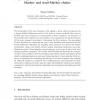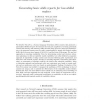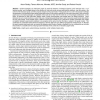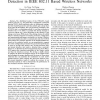1147 search results - page 214 / 230 » Task-Structure Analysis for Knowledge Modeling |
CSDA
2007
13 years 10 months ago
2007
The knowledge of the state sequences that explain a given observed sequence for a known hidden Markovian model is the basis of various methods that may be divided into three categ...
NLE
2008
13 years 10 months ago
2008
We describe SkillSum, a Natural Language Generation (NLG) system that generates a personalised feedback report for someone who has just completed a screening assessment of their b...
TVCG
2008
13 years 10 months ago
2008
Systems biologists use interaction graphs to model the behavior of biological systems at the molecular level. In an iterative process, such biologists observe the reactions of livi...
SCP
1998
13 years 9 months ago
1998
A central challenge in computer science and knowledge representation is the integration of conceptual frameworks for continuous and discrete change, as exemplified by the theory ...
INFOCOM
2011
IEEE
13 years 1 months ago
2011
IEEE
—The distributed nature of the CSMA/CA based wireless protocols, e.g., the IEEE 802.11 distributed coordinated function (DCF), allows malicious nodes to deliberately manipulate t...




